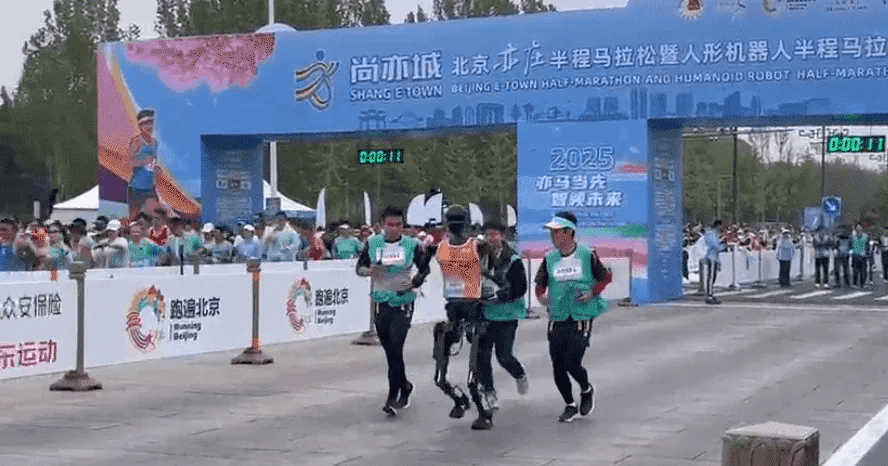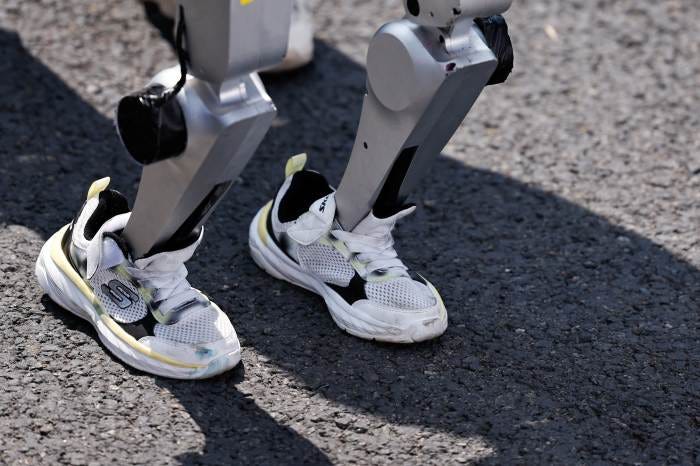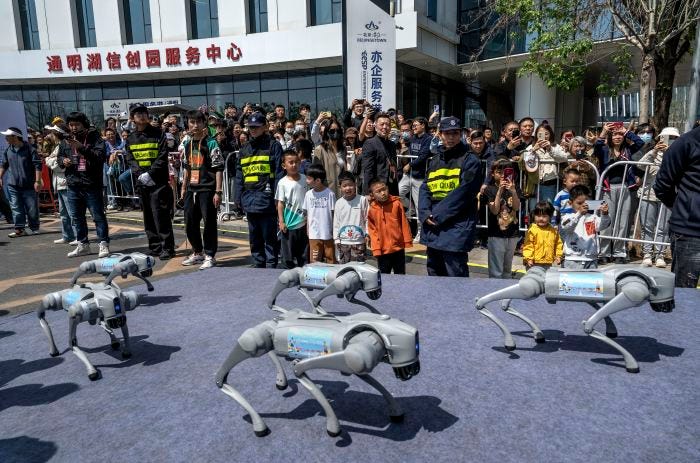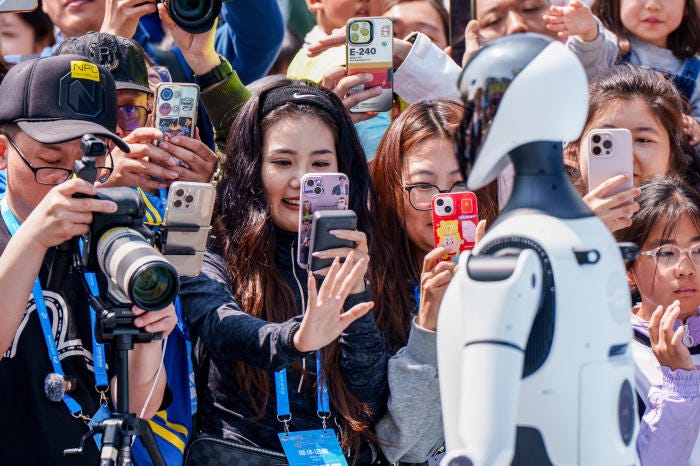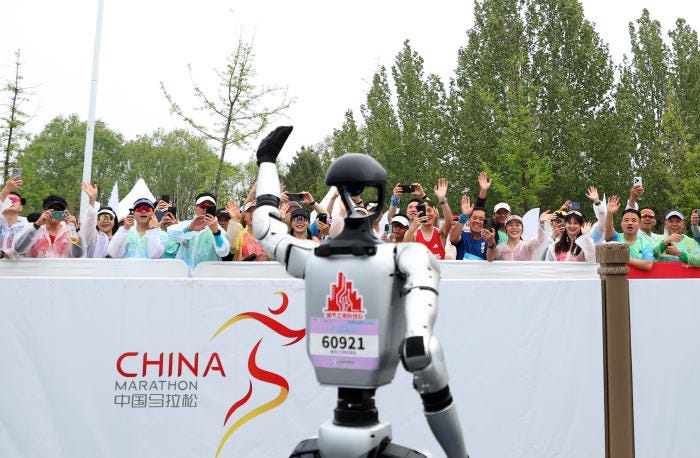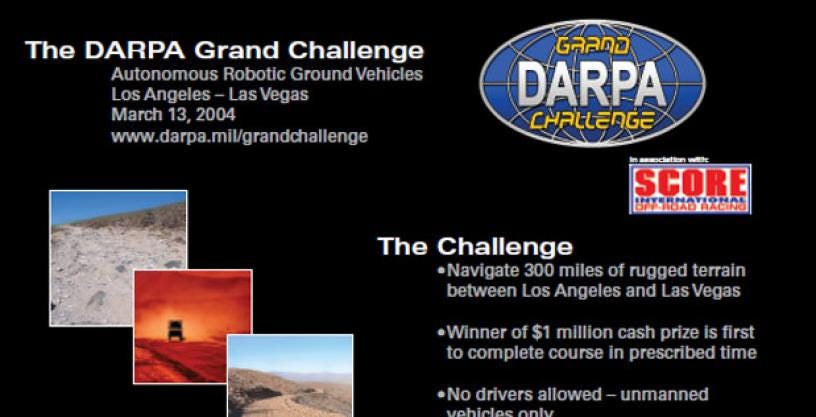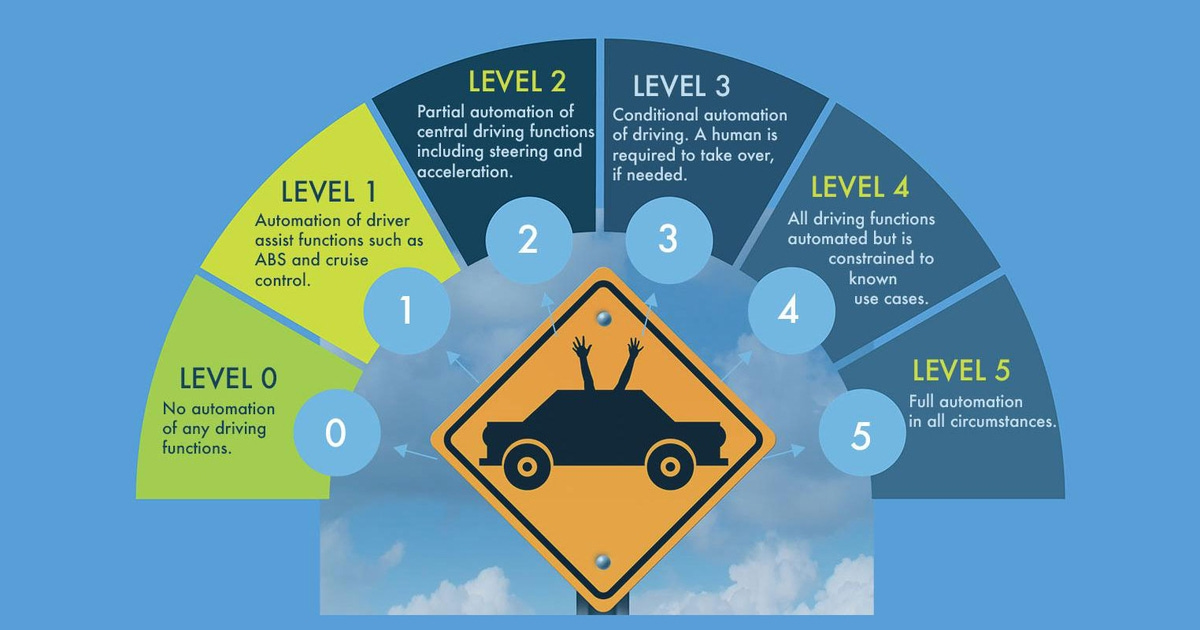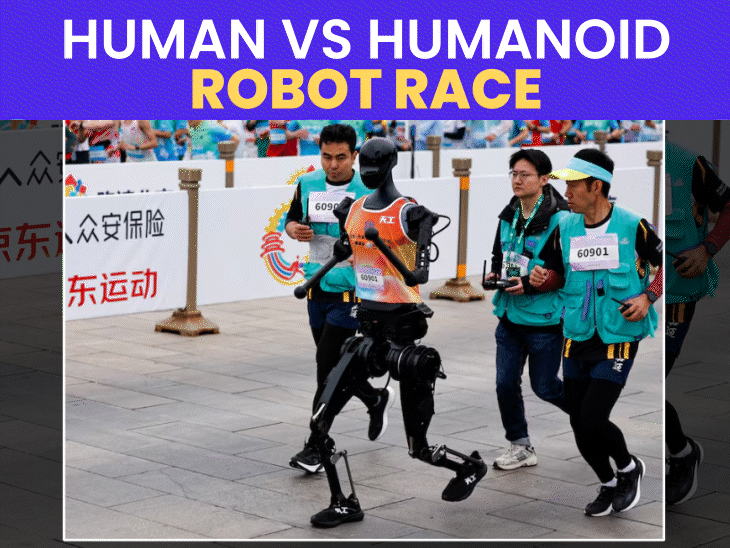
AI: AI Robots at AI self driving cars stage in 2004. RTZ #695
The Bigger Picture, Sunday April 20, 2025
Much has been made of late of the imminent, immense possibilities of AI driven robots in the Physical AI world by OpenAI, Meta, Google, Elon’s XxAI/Tesla, and many others.
Both in the US and China, investors are ramping up their investments in LLM AI powered robotics. Both humanoids and industrial. I’ve stressed for a while now that the eventual promise of AI Robotics will take years to realize, especially since the Data needed to train the AI in the robots, and run inference off the data, will take a long time to generate synthetically and in the real world. A recent marathon in China shows how far humanoid AI robots have to go. That is the Bigger Picture I’d like to unpack today.
The WSJ sets the table in “Man Versus Machine as China Shows Off Humanoid Robots in Half-Marathon”:
“A half-marathon in Beijing featured a road race between human runners and 21 robot models—and showed how far robots still are from mimicking people.”
“Metal met asphalt in a half-marathon that featured thousands of human runners—and 21 Chinese humanoid robot models.”
“Saturday’s road race involving human runners and a score of robots in Beijing has been billed as a showcase of China’s cutting-edge technology.”
“Indeed, the robots, and their developers, had much at stake in the high-profile event. If the robots fell, froze or got lost during the widely promoted event, it would be an embarrassment for their developers.”
Notable here is that they tried something like this in the first place:
“The 13 mile-race, which its organizers said was the first of its kind, was a chance for China to show off the latest state of its humanoids, one of several technology areas at the forefront of the U.S.-China tech rivalry. China has said it wants the country to be a world leader in humanoid robots by 2027. Chinese authorities have lavished support such as subsidies, talent bonuses and tax breaks on robotics companies.”
“In reality, the race showed both how quickly and smoothly some robots are able to run, but also how far away humanoids still are from being able to mimic human activity.”
The task for humanoid robots was not as simple as it may sound:
“Running is a very basic ability of human beings,” said Tang Jian, the chief technology officer of Beijing Humanoid Robot Innovation Center, which developed one of the robots, Tien Kung Ultra. “Since we are making humanlike robots, we want to give them as many basic human abilities as possible,” which would be critical in eventually deploying them for industrial purposes.”
And of course it’s a big focus for China:
“China is making a major push to produce more and more sophisticated robotics in part to raise the automation level of its factories.”
And the race had great vibes of humans and robots doing this together:
“Before the race, thousands of human runners crowded in one lane behind the starting line, many jogging in place to keep warm. The humanoids, separated by fences into another lane from the human runners, stood largely still as they waited for the start.”
“When a siren marked the start of the race at 7:30 a.m., the human runners dashed and spilled onto the course. But the robots’ starts were staggered by a minute or two each to prevent them from ramming into each other.”
“The first robot off the mark was Tien Kung Ultra, a 5-foot-9 inches, 115-pound humanoid, featuring a pitch-black head and sporting an orange tank top. Three people accompanied it to help control the robot.”
“The race was the culmination of months of training for the humanoids, which had to master skills that are innate to humans. They had to navigate the course’s flat and hilly roads and maneuver around six left turns and eight right turns, according to the organizers. Developers had to train the robots to keep their stability and balance to avoid falling over a half-marathon distance.”
The rules were straight-forward, and hard for the humanoid robots:
“The cutoff time for the robots was 3.5 hours, meaning that the minimum average speed for the robot runners to finish the race was about 3.7 miles an hour. Developers said humanoid robots typically can operate for no more than two hours on a single charge of their batteries. The faster they run, the shorter the distance they can cover.”
“Components and parts could easily break while running, so developers replaced plastic parts with metal and used extra-strong—but costly—materials. One company trained their humanoids by connecting the robot to a fitness machine-like metal stand to prevent it from falling, a social-media post showed.”
“Tien Kung Ultra was developed by Beijing Humanoid Robot Innovation Center, a research institute also called X-Humanoid and formed by robotics firm UBTech, electronics and electric-vehicle maker Xiaomi and the local Beijing government. It could run on average 6 miles an hour and could handle hills, stairs, grass and sand, a profile of Tien Kung Ultra posted online by the local Beijing district showed.”
There were many favorites to choose from:
“X-Humanoid revamped an existing robot model for the half-marathon. Tien Kung Ultra has longer legs than its original model and is taller by around 4 inches, helping it to run faster, state media reported. The developers also used stronger materials to make the hip joints of the robot and installed a pair of sneaker soles on the robot’s feet to absorb shocks and reduce damage to its legs and feet.”
“Tien Kung Ultra largely breezed ahead of other robots on the route. It fell once when the battery failed, Tang said. The robots were allowed to swap batteries, and Tien Kung Ultra changed its battery three times.”
“While many robots were directed by a remote control, Tien Kung Ultra used wireless tracking technology that allowed it to communicate with a person running in front of it. An algorithm determined the precise distance needed between the human being and the humanoid, Tang said.”
“Besides Tien Kung Ultra, there was Xiaowantong N2, or Little Rascal N2, a 4-feet, 66-pound childlike robot developed by Noetix Robotics. At 5 feet 6 inches, Huanhuan was the only one with a head resembling a human. Another robot called Shennong had propellers.”
The results were mixed, and they all got an A for effort:
“Some were steady and well balanced while others walked—barely. Some never made it much further beyond the starting line. Huanhuan wobbled, at times heading in the wrong direction, then ended its race quickly by sitting down on the course and refusing to go further.”
“Shennong was particularly disastrous, swinging wildly just after the start, causing the human support runner who was trying to control it to trip. The robot slammed into a fence, breaking into pieces. The marathon staff dashed to clear off the remaining pieces; Shennong’s arm dangled as it left the course.”
“The human male champion completed the race in one hour, two minutes and 36 seconds, followed by thousands of exhilarated human runners. Some were exhausted, resting nearby to catch their breath.”
“After two hours, 40 minutes and 42 seconds, Tien Kung Ultra was the first robot to reach the finish line. A large crowd of spectators, including government officials, was eagerly awaiting the robots. Many surrounded Tien Kung Ultra to take photos. The robot maintained its blank expression.”
Bottom line, here were the results:
“In the end, no other robots were able to meet the cutoff time, when also considering the penalty times they received. Little Rascal N2 and its sibling model Xuanfeng Xiaozi N2—or ‘Whirlwind Kid’—were among the robots that followed, state media showed. While team Tien Kung stuck with one robot throughout the race, others switched robots.”
“Hang Qian, a 29-year-old Beijing resident who ran the half-marathon, said he beat Tien Kung Ultra by about 10 minutes.”
“For ordinary people, a half marathon is an extremely challenging sport and everyone gets exhausted. But robots can continue on by replacing the battery,” Hang said.
“In the future, there could be robots competing in cooking, rock climbing or swimming,” he said. “I’m looking forward to them all.”
Spectacular first attempt indeed.
The whole piece is worth a read, especially for a from the ground look and feel of humanoid robots trying to show off their AI chops.
The whole event has the vibes of the DARPA self driving car challenge that kicked off the EV and self driving craze over two decades ago in 2004. That event kicked off the machine learning driven phase of self driving cars. As the Verge reminds us of the event:
“The Mojave Desert is not typically a place for a car race, but these were not your typical cars, and this was not your typical race. The course was 150 miles of rocks, loose dirt, and narrow switchbacks — harrowing terrain even for the most rugged vehicles. The obvious goal: be the first to cross the finish line without crashing, flipping over, or catching fire. The prize was $1 million.”
Very Austin Powers today of course.
“The participants looked straight out of Mad Max: military-grade Humvees, dune buggies, motorcycles, and a particularly gnarly-looking Acura SUV. No drivers with mohawks and shoulder pads, unfortunately. No drivers at all. This was the DARPA Grand Challenge — the world’s first robot car race.”
“It was March 13th, 2004, a watershed moment in autonomous vehicle history. The Grand Challenge would go on to prove that robot-powered cars were more than just an illustrated fantasy splashed across the pages of Popular Science and could do more than give Arnold Schwarzenegger a ride through an underground Martian city.”
Great movie, Total Recall, the 1990 version:
We’ve come a long way since then, and yet have a long way to go.
And as I’ve outlined several times, we’re barely at past Level 2 on AI self driving on a five level Scale. AI self driving is still the ‘canary in the AI coal mine’ in my view.
Humanoid Robots have a lot of promise, but will likely take at least as long as AI self driving cars, if not longer.
And China has a head start on both AI robots and cars due to their manufacturing scale up and down the AI Tech Stack. And that’s before the Trump Tariff impact on AI/Tech around these robots and self driving cars.
So while humanoid robots doing half marathons are definitely cool, we need to keep the Bigger Picture in mind, that it may all take a bit longer than we all like. Stay tuned.
(NOTE: The discussions here are for information purposes only, and not meant as investment advice at any time. Thanks for joining us here)

